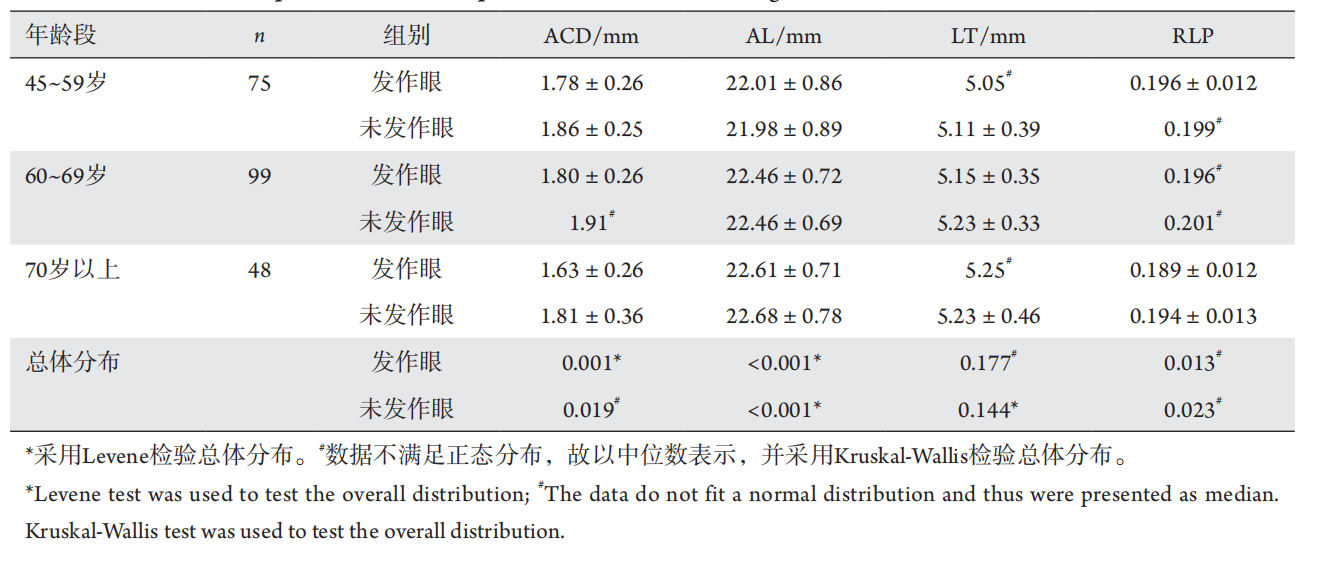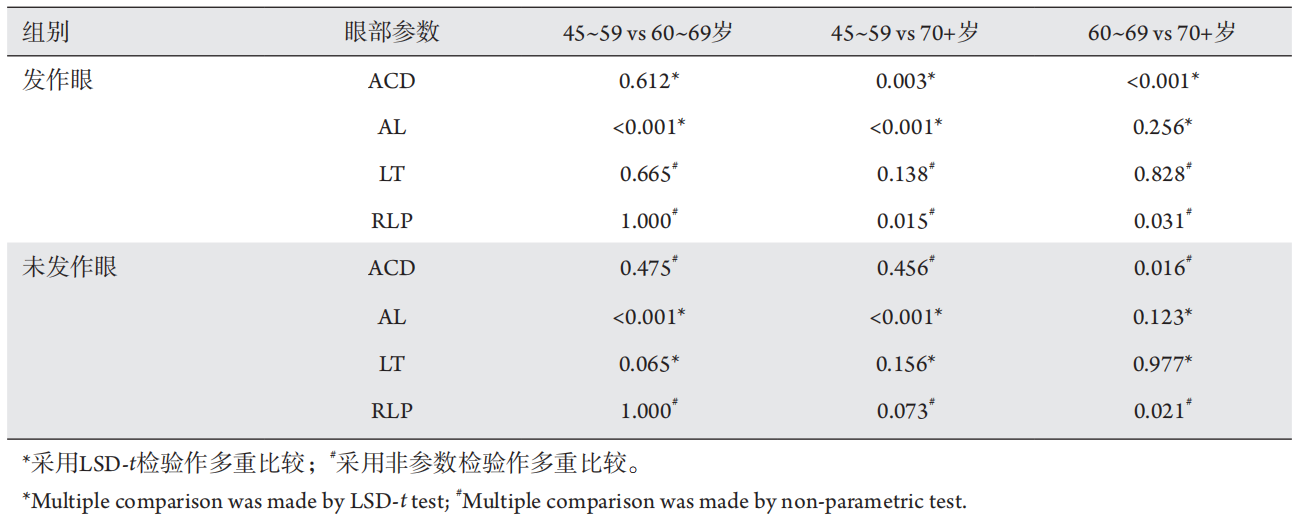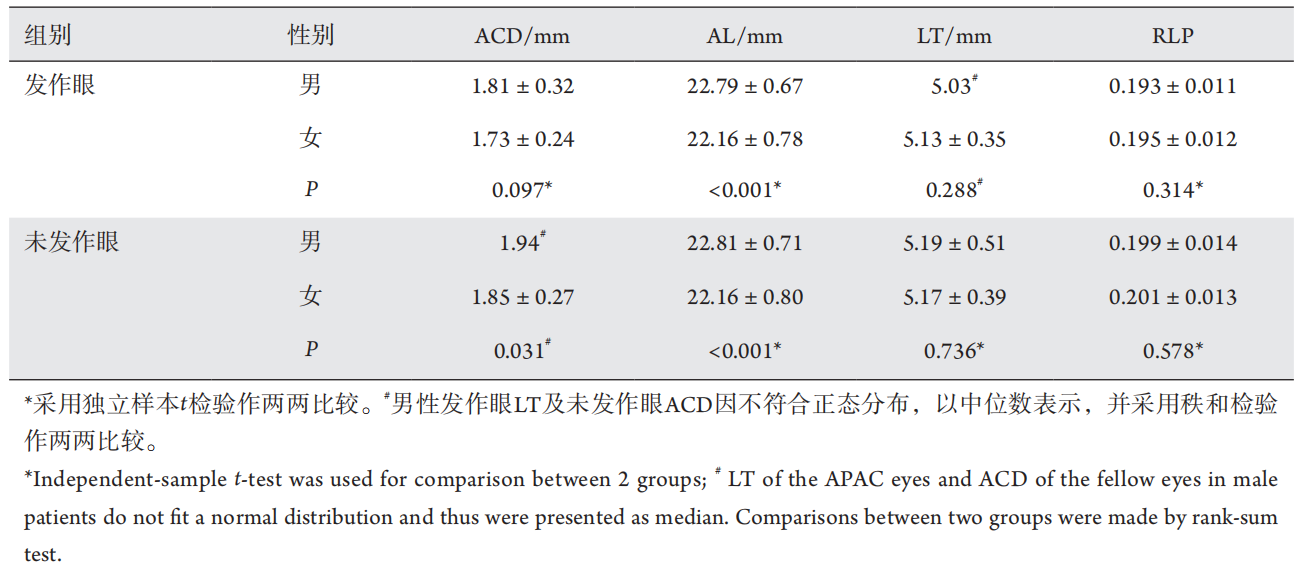1、Sun X, Dai Y, Chen Y, et al. Primary angle closure glaucoma: What we
know and what we don't know[ J]. Prog Retin Eye Res, 2017, 57: 26-45.Sun X, Dai Y, Chen Y, et al. Primary angle closure glaucoma: What we
know and what we don't know[ J]. Prog Retin Eye Res, 2017, 57: 26-45.
2、Wang L, Huang W, Huang S, et al. Ten-year incidence of primary angle
closure in elderly Chinese: The Liwan Eye Study[ J]. Br J Ophthalmol,
2019, 103(3): 355-360.Wang L, Huang W, Huang S, et al. Ten-year incidence of primary angle
closure in elderly Chinese: The Liwan Eye Study[ J]. Br J Ophthalmol,
2019, 103(3): 355-360.
3、Marchini G, Pagliarusco A, Toscano A, et al. Ultrasound biomicroscopic
and conventional ultrasonographic study of ocular dimensions in primary
angle-closure glaucoma[ J]. Ophthalmology, 1998, 105(11): 2091-2098.Marchini G, Pagliarusco A, Toscano A, et al. Ultrasound biomicroscopic
and conventional ultrasonographic study of ocular dimensions in primary
angle-closure glaucoma[ J]. Ophthalmology, 1998, 105(11): 2091-2098.
4、Ang LP, Aung T, Chew PT. Acute primary angle closure in an Asian
population: Long-term outcome of the fellow eye after prophylactic
laser peripheral iridotomy[ J]. Ophthalmology, 2000, 107(11):
2092-2096.Ang LP, Aung T, Chew PT. Acute primary angle closure in an Asian
population: Long-term outcome of the fellow eye after prophylactic
laser peripheral iridotomy[ J]. Ophthalmology, 2000, 107(11):
2092-2096.
5、Sng CCA, Aquino MCD, Liao J, et al. Pretreatment anterior segment
imaging during acute primary angle closure: Insights into angle
closure mechanisms in the acute phase[ J]. Ophthalmology, 2014,
121(1): 119-125.Sng CCA, Aquino MCD, Liao J, et al. Pretreatment anterior segment
imaging during acute primary angle closure: Insights into angle
closure mechanisms in the acute phase[ J]. Ophthalmology, 2014,
121(1): 119-125.
6、Jonas JB, Iribarren R, Nangia V, et al. Lens position and age: The
Central India Eye and Medical Study[ J]. Invest Ophthalmol Vis Sci,
2015, 56(9): 5309-5314.Jonas JB, Iribarren R, Nangia V, et al. Lens position and age: The
Central India Eye and Medical Study[ J]. Invest Ophthalmol Vis Sci,
2015, 56(9): 5309-5314.
7、Jonas JB, Nangia V, Gupta R, et al. Lens thickness and associated
factors[ J]. Clin Exp Ophthalmol, 2012, 40(6): 583-590.Jonas JB, Nangia V, Gupta R, et al. Lens thickness and associated
factors[ J]. Clin Exp Ophthalmol, 2012, 40(6): 583-590.
8、Jonas JB, Nangia V, Gupta R, et al. Anterior chamber depth and its
associations with ocular and general parameters in adults[ J]. Clin Exp
Ophthalmol, 2012, 40(6): 550-556.Jonas JB, Nangia V, Gupta R, et al. Anterior chamber depth and its
associations with ocular and general parameters in adults[ J]. Clin Exp
Ophthalmol, 2012, 40(6): 550-556.
9、Zhong X, Li Y, Huang C, et al. Seasonal variations and climatic factors
on acute primary angle-closure admission in southern China: A 5-year
hospital-based retrospective study[ J]. Acta Ophthalmol, 2020. [Epub
ahead of print].Zhong X, Li Y, Huang C, et al. Seasonal variations and climatic factors
on acute primary angle-closure admission in southern China: A 5-year
hospital-based retrospective study[ J]. Acta Ophthalmol, 2020. [Epub
ahead of print].
10、Xu L, Cao WF, Wang YX, et al. Anterior chamber depth and chamber
angle and their associations with ocular and general parameters: The
Beijing Eye Study[ J]. Am J Ophthalmol, 2008, 145(5): 929-936.Xu L, Cao WF, Wang YX, et al. Anterior chamber depth and chamber
angle and their associations with ocular and general parameters: The
Beijing Eye Study[ J]. Am J Ophthalmol, 2008, 145(5): 929-936.
11、Nongpiur ME, He M, Amerasinghe N, et al. Lens vault, thickness, and
position in Chinese subjects with angle closure[ J]. Ophthalmology.
2011, 118(3): 474-479.Nongpiur ME, He M, Amerasinghe N, et al. Lens vault, thickness, and
position in Chinese subjects with angle closure[ J]. Ophthalmology.
2011, 118(3): 474-479.
12、Lavanya R, Wong TY, Friedman DS, et al. Determinants of angle
closure in older Singaporeans[ J]. Arch Ophthalmol, 2008, 126(5):
686-691.Lavanya R, Wong TY, Friedman DS, et al. Determinants of angle
closure in older Singaporeans[ J]. Arch Ophthalmol, 2008, 126(5):
686-691.
13、Suwan Y, Jiamsawad S, Tantraworasin A, et al. Qualitative and
quantitative evaluation of acute angle-closure mechanisms[ J]. BMC
Ophthalmol, 2017, 17(1): 246.Suwan Y, Jiamsawad S, Tantraworasin A, et al. Qualitative and
quantitative evaluation of acute angle-closure mechanisms[ J]. BMC
Ophthalmol, 2017, 17(1): 246.
14、Moghimi S, Zandvakil N, Vahedian Z, et al. Acute angle closure:
Qualitative and quantitative evaluation of the anterior segment
using anterior segment optical coherence tomography[ J]. Clin Exp
Ophthalmol, 2014, 42(7): 615-622.Moghimi S, Zandvakil N, Vahedian Z, et al. Acute angle closure:
Qualitative and quantitative evaluation of the anterior segment
using anterior segment optical coherence tomography[ J]. Clin Exp
Ophthalmol, 2014, 42(7): 615-622.
15、Lim MC, Lim LS, Gazzard G, et al. Lens opacity, thickness, and
position in subjects with acute primary angle closure[ J]. J Glaucoma,
2006, 15(3): 260-263.Lim MC, Lim LS, Gazzard G, et al. Lens opacity, thickness, and
position in subjects with acute primary angle closure[ J]. J Glaucoma,
2006, 15(3): 260-263.
16、Huang J, Wang Z, Wu Z, et al. Comparison of ocular biometry between
eyes with chronic primary angle-closure glaucoma and their fellow
eyes with primary angle-closure or primary angle-closure suspect[ J]. J
Glaucoma, 2015, 24(4): 323-327.Huang J, Wang Z, Wu Z, et al. Comparison of ocular biometry between
eyes with chronic primary angle-closure glaucoma and their fellow
eyes with primary angle-closure or primary angle-closure suspect[ J]. J
Glaucoma, 2015, 24(4): 323-327.
17、Moghimi S, Bijani F, Chen R, et al. Anterior segment dimensions
following laser iridotomy in acute primary angle closure and fellow
eyes[ J]. Am J Ophthalmol, 2018, 186: 59-68.Moghimi S, Bijani F, Chen R, et al. Anterior segment dimensions
following laser iridotomy in acute primary angle closure and fellow
eyes[ J]. Am J Ophthalmol, 2018, 186: 59-68.
18、Wang F, Wang D, Wang L. Exploring the occurrence mechanisms of
acute primary angle closure by comparative analysis of ultrasound
biomicroscopic data of the attack and fellow eyes[ J]. Biomed Res Int,
2020, 2020: 8487907.Wang F, Wang D, Wang L. Exploring the occurrence mechanisms of
acute primary angle closure by comparative analysis of ultrasound
biomicroscopic data of the attack and fellow eyes[ J]. Biomed Res Int,
2020, 2020: 8487907.







